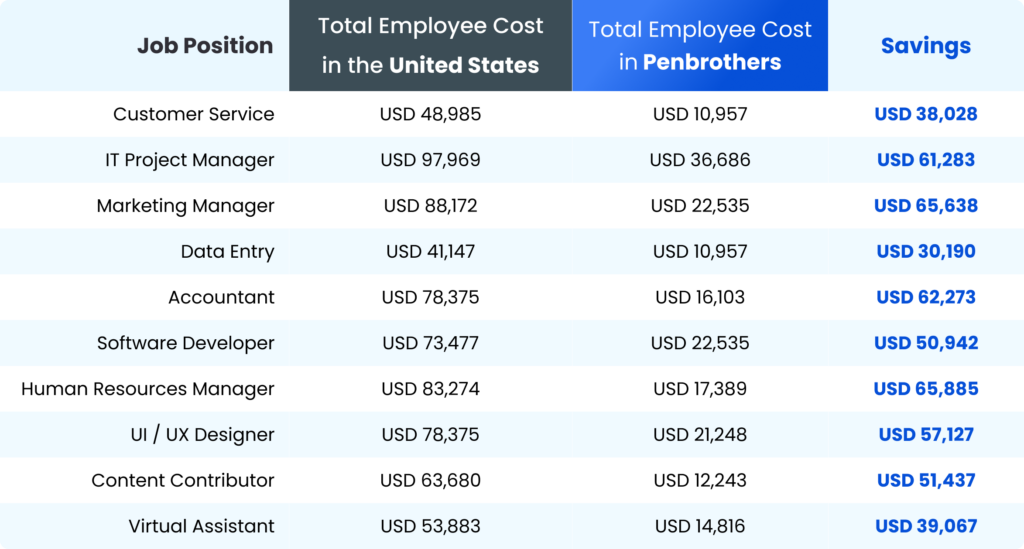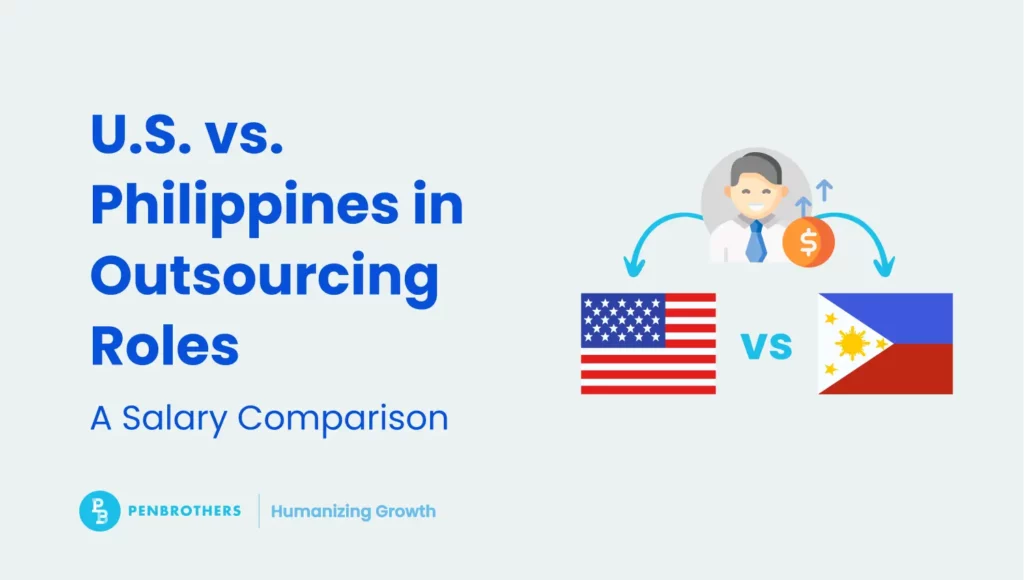In a world where businesses are constantly seeking competitive advantages, outsourcing presents a compelling solution. But with varied salary expectations across borders, how do the compensation packages for key roles in the U.S. measure up against those in the Philippines?
This article uncovers the nuances of these salary comparisons, equipping business leaders with the knowledge they need to make strategic outsourcing decisions.
Understanding the Outsourcing Landscape
The outsourcing market is booming. According to IBPAP, the Philippine outsourcing sector added 121,000 full-time employees (FTEs) in 2022, marking an 8.4% increase compared to 2021. This growth raises the total workforce in the BPO sector to 1.57 million. Additionally, the industry generated $32.5 billion in revenue, representing a 10.3% rise from the previous year’s $29.5 billion.
The International Labour Organization (ILO) notes that the country’s Business Process Outsourcing (BPO) sector employs over a million people, making it a key player in the global outsourcing landscape. Yet, understanding the salary dynamics between the U.S. and the Philippines is crucial for executives considering this transition.
Key Statistics:
- The average annual salary for an outsourcing role in the Philippines is significantly lower than that in the U.S. For example, the average annual salary for a Customer Service Representative in the Philippines is approximately $16,793 compared to $48,985 in the U.S.
These figures paint a compelling picture. Businesses looking to optimize their operations can benefit tremendously from leveraging Filipino talent, particularly when they understand the financial implications.
Acknowledging Common Concerns
When considering outsourcing, businesses often face multiple challenges. Cost management is at the forefront. Business leaders worry about balancing affordability with quality. Additionally, concerns about communication barriers and cultural differences can deter companies from pursuing this option.
However, understanding the Philippine labor market’s landscape is essential. The country boasts a large pool of English-speaking professionals, with a literacy rate of over 97%, making communication seamless. The U.S. Bureau of Labor Statistics indicates that outsourcing can result in a significant reduction in operational costs, with businesses saving up to 70% on salaries and operational expenses.
Common Challenges in Outsourcing
- Quality Assurance: Ensuring that outsourced roles meet company standards.
- Cultural Fit: Navigating potential cultural differences that may affect collaboration.
- Cost Management: Balancing budget constraints with the need for quality talent.
Recognizing these challenges allows businesses to approach outsourcing with a strategic mindset, leading to more successful partnerships.
Proving the Value: Cost Comparisons*
Let’s delve into the specifics of salaries for key outsourcing roles. Here’s a comparison of average salaries for selected roles in the U.S. and the Philippines:

*Based on Penbrother’s Offshore Staffing Calculator
Key Insights:
- Cost Savings: The difference in salary ranges highlights significant cost savings. By hiring in the Philippines, companies can save up to 79% on salaries while accessing skilled professionals. KPMG reports that firms in the Philippines can offer highly competitive rates without compromising on quality.
- Access to Talent: Filipino professionals are highly educated and well-trained, particularly in fields like IT, customer service, and marketing. A report indicates that the country produces over 600,000 graduates in various fields annually, contributing to a robust talent pool.
- Quality of Work: Many Philippine outsourcing firms, including Penbrothers, implement rigorous training and quality assurance processes to ensure high standards. A survey by McKinsey & Company found that companies outsourcing to the Philippines report improved service levels and customer satisfaction.
Take the Next Step
In conclusion, understanding salary comparisons between the U.S. and the Philippines is vital for businesses contemplating outsourcing. The potential for cost savings is significant, but it’s equally important to ensure quality and cultural fit.
As you explore your outsourcing strategy, consider the following steps:
- Research Potential Partners: Investigate outsourcing firms, like Penbrothers, that align with your company’s values and needs.
- Reach Out for Consultations: Contact outsourcing specialists to discuss your unique requirements and how they can help you achieve your goals.
- Evaluate Your Options: Take time to weigh the benefits and challenges of outsourcing, making informed decisions that will drive your business forward.
Outsourcing to the Philippines is more than a cost-cutting measure; it’s an opportunity to tap into a wealth of talent and expertise. As the global market evolves, understanding these dynamics will empower your business to thrive.






